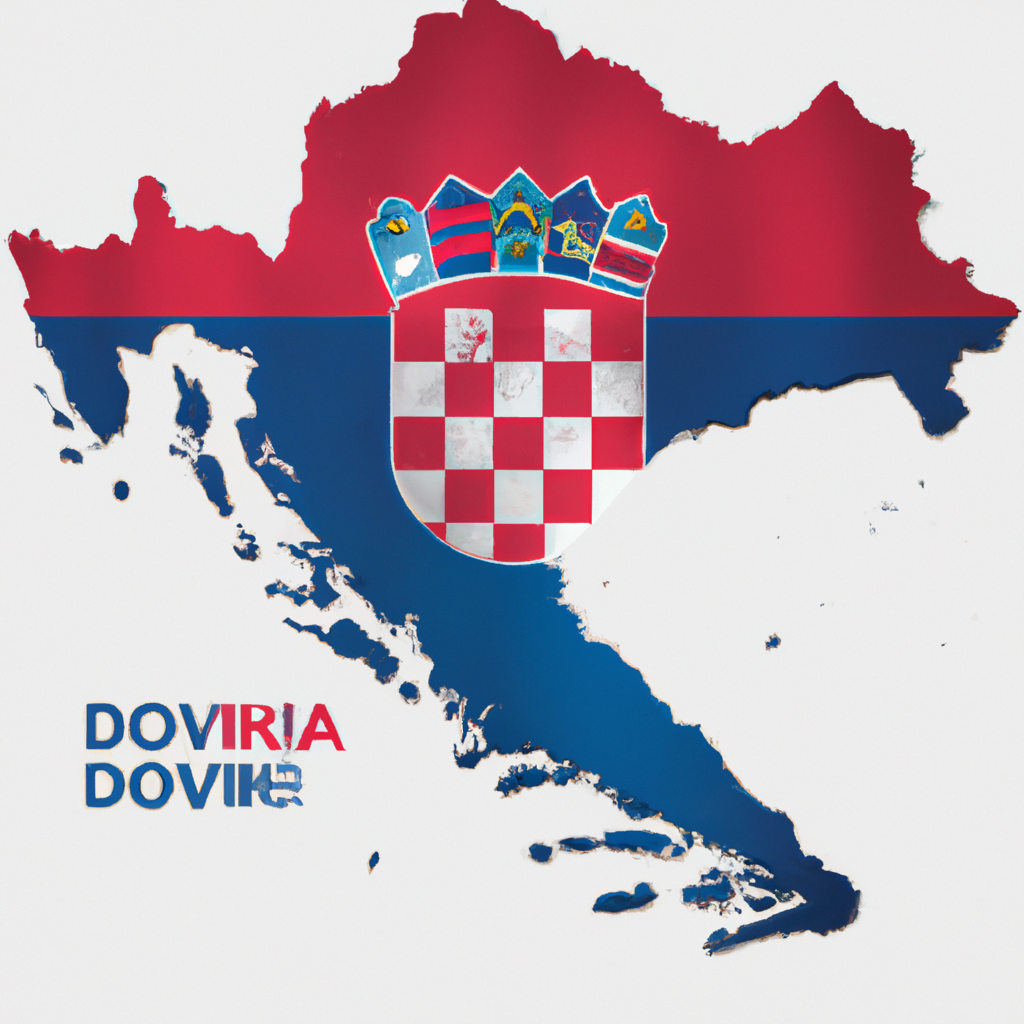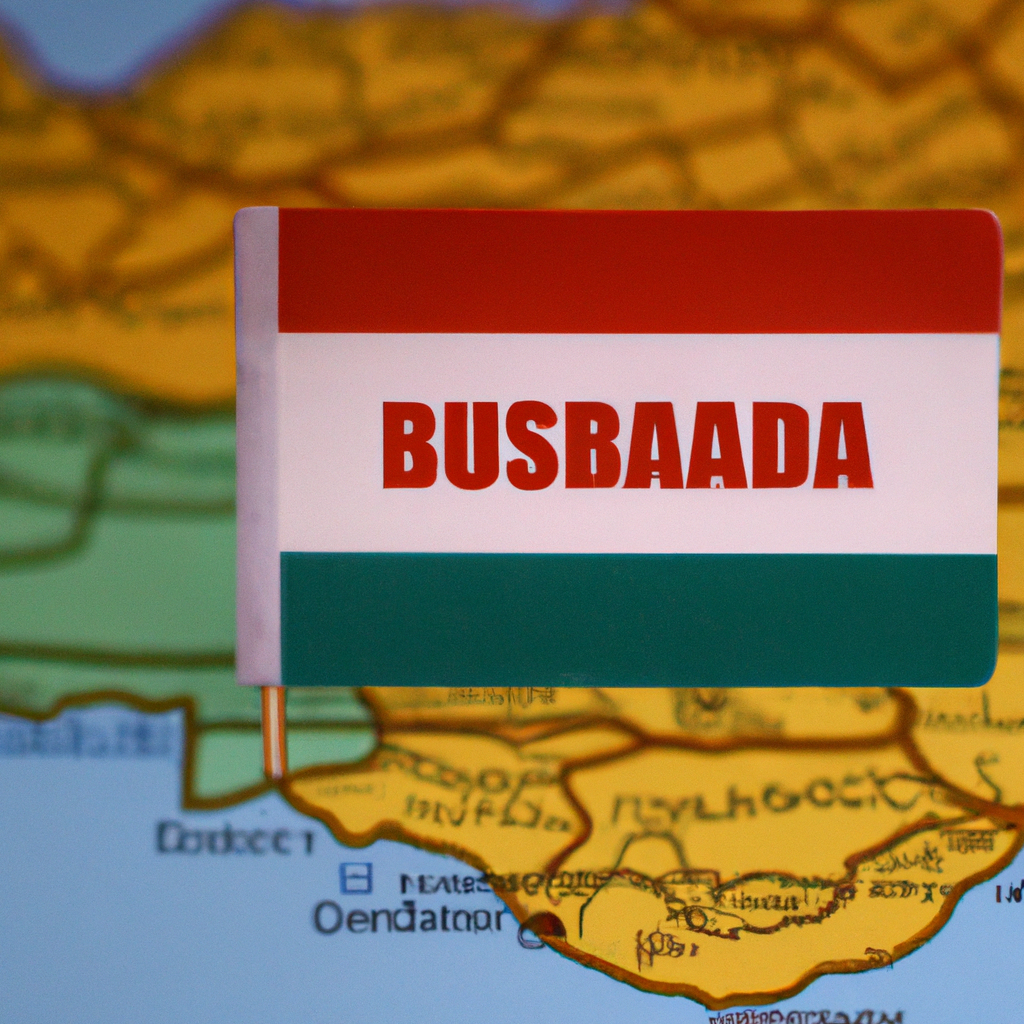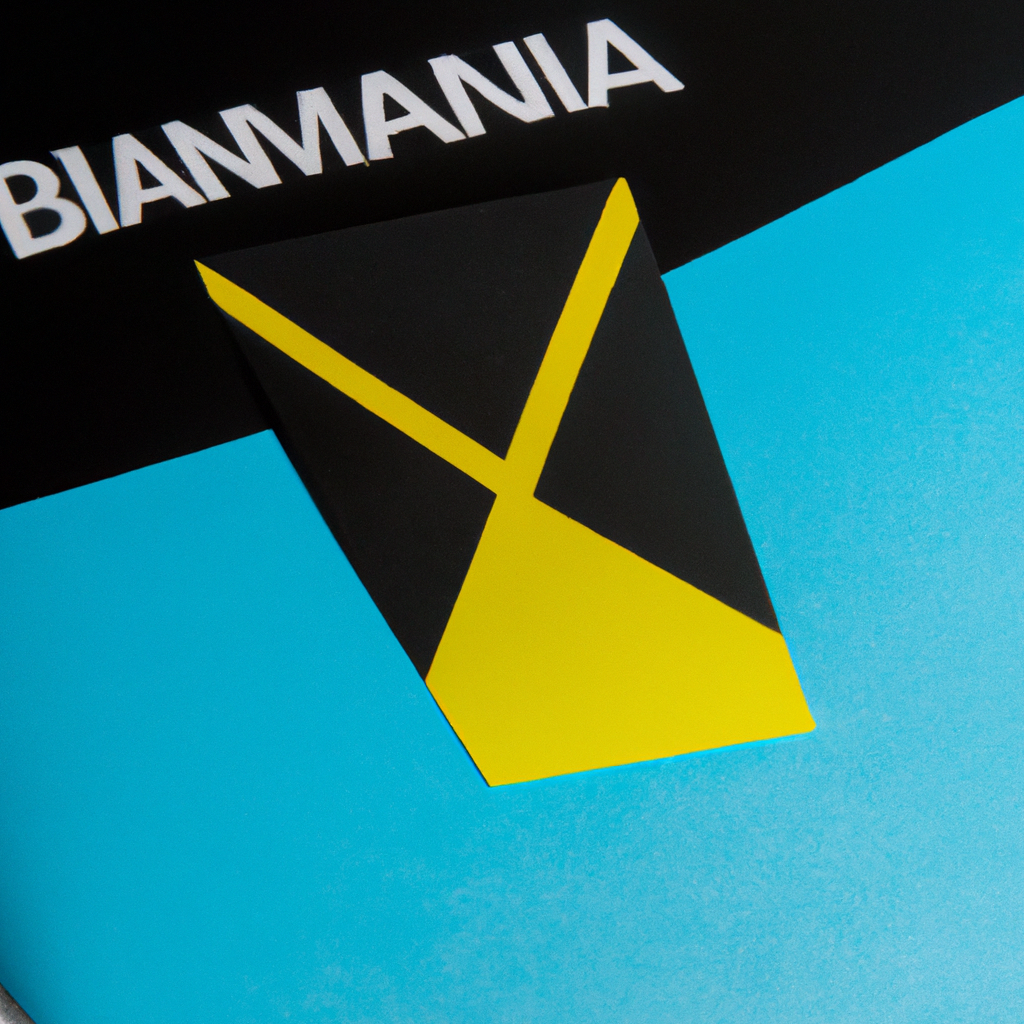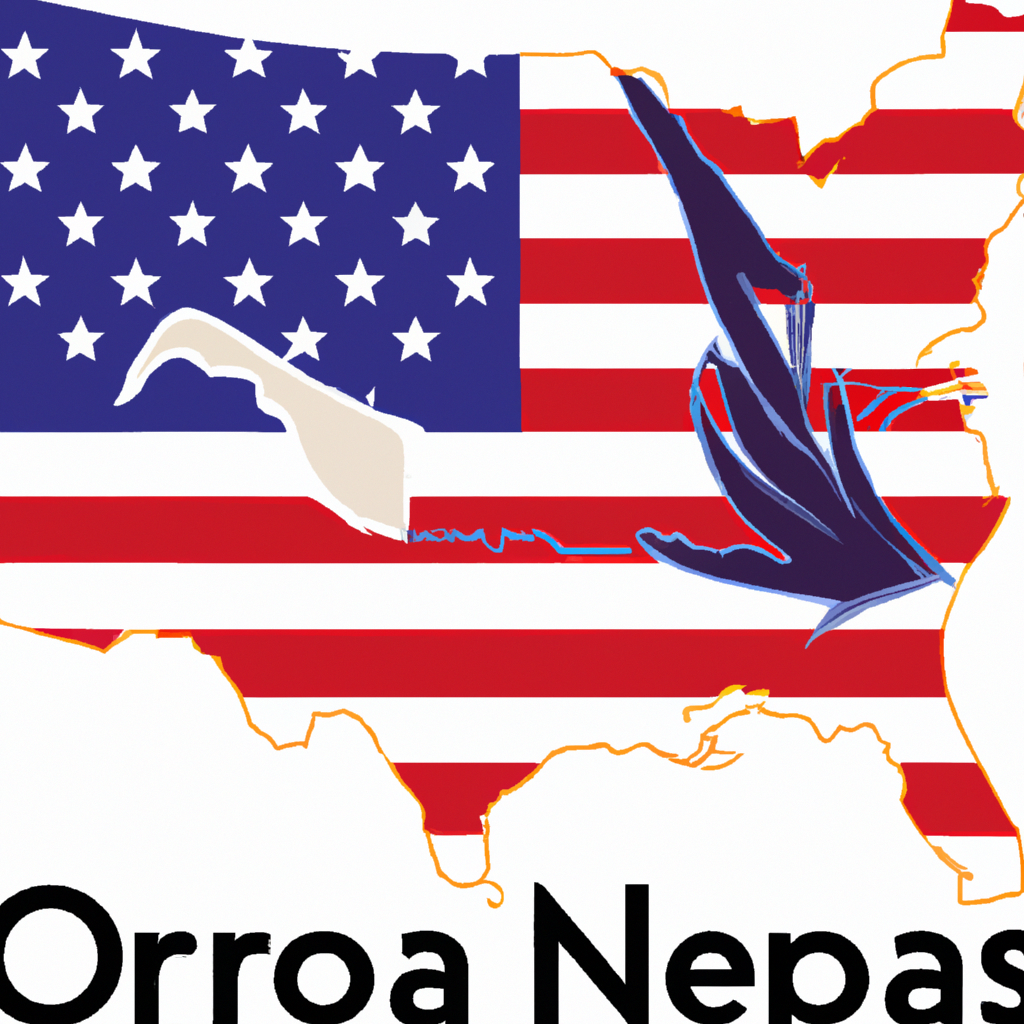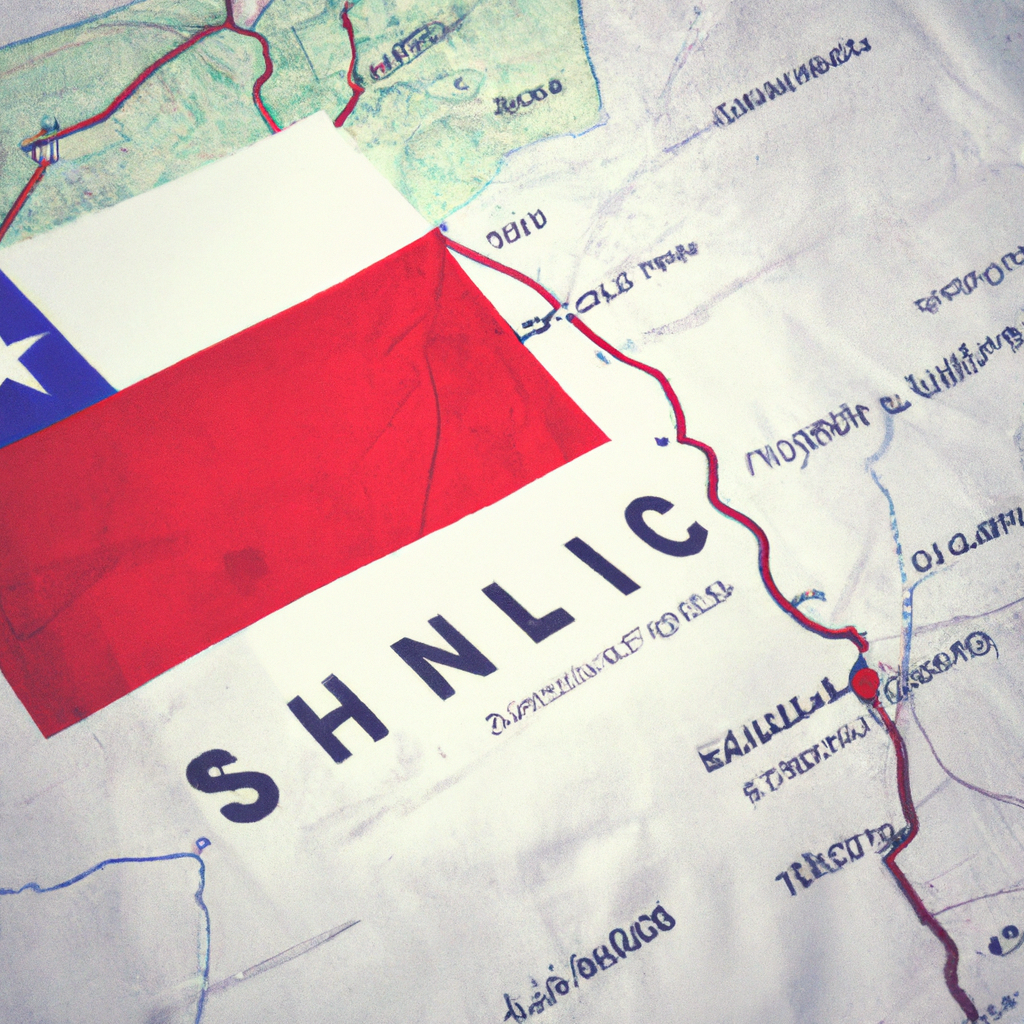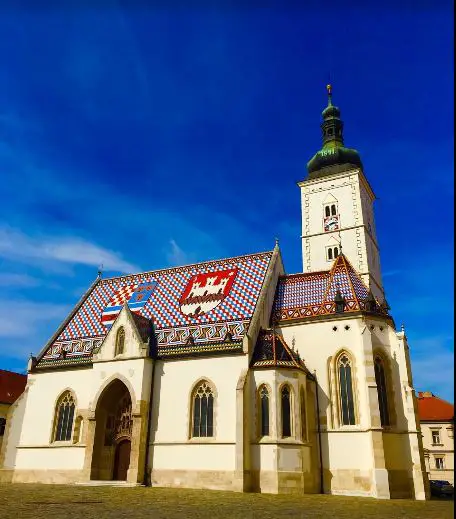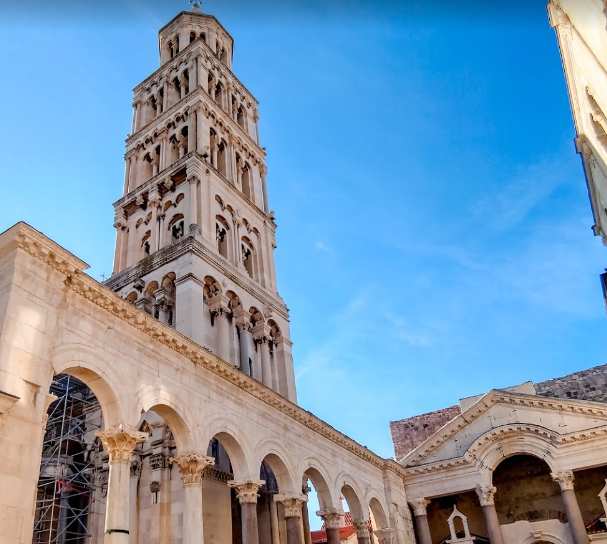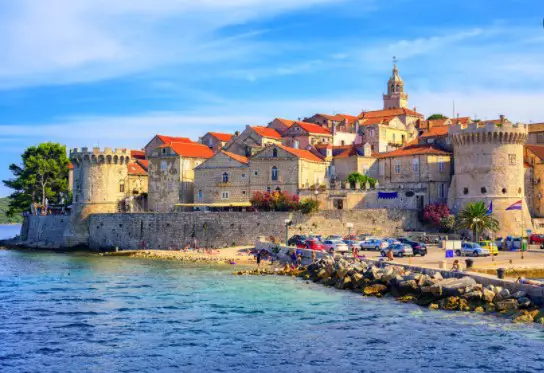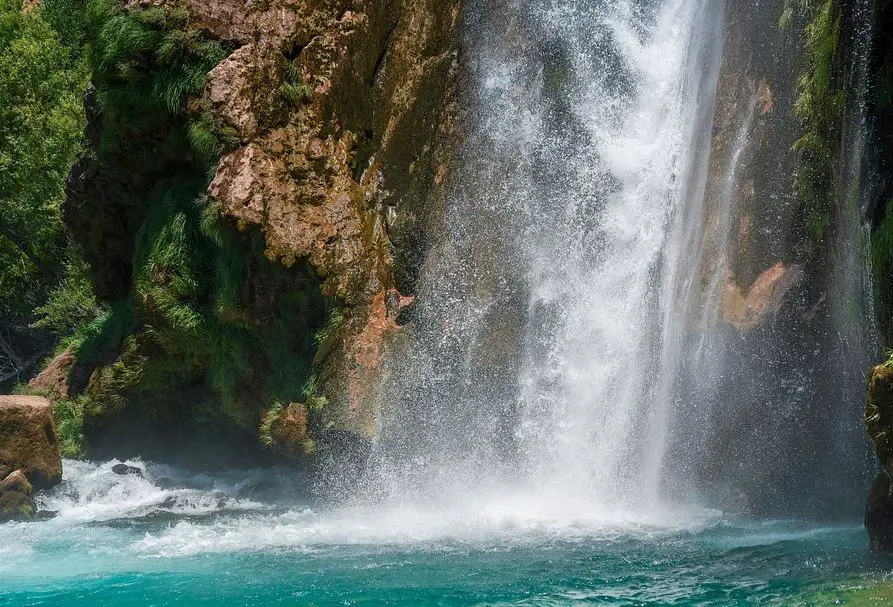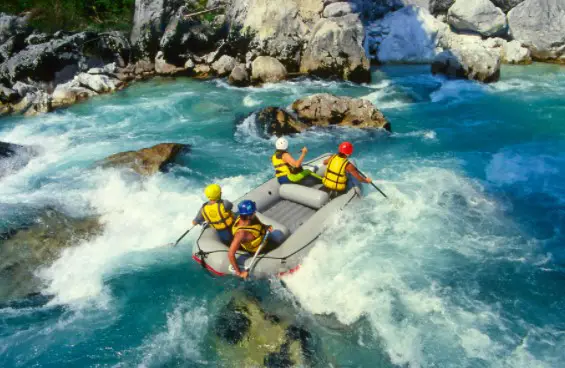Dubrovnik, Croatia: Interesting Facts,History, Things to do,Why to Visit
Post ByAdequate Travel
Dubrovnik, Croatia is an amazing city full of fascinating history, attractions, and activities. Located on the Adriatic Sea, the old city walled town, will allow you to explore its culture and history unlike anywhere else. Learn about the interesting facts, history, and things to do in this picturesque and stunning destination. Discover why Dubrovnik is one of the most visited cities in Croatia. From boat tours to various museums and sightseeing tours, Dubrovnik has something to offer for every type of traveler.
Croatia is a country located in Southeastern Europe. It shares its borders with Slovenia, Hungary, Serbia, Bosnia and Herzegovina, and Montenegro. Its capital and largest city is Zagreb. Croatia has a diverse landscape, including Adriatic coastlines, lush forests, and stunning national parks. The country has a rich history, with influences from the Roman Empire, Illyrians, Byzantines, and the Austro-Hungarian Empire. Croatia gained independence from Yugoslavia in 1991 and became a member of the European Union in 2013. Its economy is mainly based on tourism, agriculture, and manufacturing. Croatia is known for its beautiful coastal cities such as Dubrovnik and Split, charming medieval towns, picturesque islands, and vibrant cultural heritage.Exploring the city's diverse neighborhoods is one of the best ways to discover the best croatia attractions, each with its own character and charm.
Interesting facts
Geographical location
Croatia is situated in southeastern Europe, bordered by Slovenia to the northwest, Hungary to the northeast, Serbia to the east, Bosnia and Herzegovina to the southeast, and Montenegro to the southeast. To the west, Croatia is predominantly coastline along the Adriatic Sea.
Rich history
Croatia has a long and diverse history, shaped by influences from various civilizations and cultures. From Roman rule to Byzantine and Venetian influences, Croatia has seen many empires come and go. In the 20th century, Croatia was part of Yugoslavia before gaining independence in 1991.
Breathtaking natural beauty
Croatia is known for its stunning natural landscapes. From cascading waterfalls and turquoise lakes in Plitvice Lakes National Park to the crystal-clear waters and picturesque islands of the Adriatic Sea, Croatia offers a diverse and captivating environment for visitors and locals alike.
Rich cultural heritage
Croatia is renowned for its cultural heritage, including its medieval cities, ancient ruins, and UNESCO World Heritage Sites. The historic city of Dubrovnik, with its well-preserved walls and old town, is a prime example of Croatia's cultural importance. Additionally, the city of Split is home to the UNESCO-listed Diocletian's Palace, a Roman emperor's residence turned vibrant urban center.
Gastronomic delights
Croatian cuisine is a delicious fusion of Mediterranean, Central European, and Balkan influences. Traditional dishes include seafood, grilled meats, homemade pasta, and a variety of pastries. One popular Croatian dish is "Peka," which is a slow-cooked mix of meat and vegetables, often prepared under a metal bell-shaped lid.
Outdoor activities
Croatia offers a wide range of outdoor activities for nature enthusiasts and adventure seekers. From hiking and cycling in the national parks to sailing along the coast and exploring the underwater world through diving and snorkeling, there are plenty of opportunities to connect with nature and enjoy thrilling adventures.
Game of Thrones filming locations
For fans of the TV series Game of Thrones, Croatia is a must-visit destination. Several iconic scenes were filmed in Croatia, particularly in Dubrovnik. The city's walls and fortresses were transformed into King's Landing, providing an immersive experience for fans of the show.
International sports success
Croatia has a strong sporting tradition and has achieved notable success in various sports. The national football team reached the FIFA World Cup final in 2018, becoming runners-up. Croatia also excels in water polo, handball, and tennis, producing world-class athletes who compete at the highest level.
Hospitality and tourism
Croatians are known for their warm hospitality and welcoming nature. The country has experienced an increase in tourism in recent years, attracting visitors from all around the world. Whether exploring the vibrant city life or relaxing on the stunning beaches, Croatian locals go above and beyond to make visitors feel welcome.
Unique island culture
Croatia has over a thousand islands along its coastline, each with its own unique culture, history, and charm. From the popular tourist destinations like Hvar and Korčula to the more secluded and undiscovered islands like Vis and Lastovo, Croatia's islands offer a diverse range of experiences for travelers.
Note: The usage of the h5 and p HTML tags in the above examples is for explanatory purposes only and does not reflect the actual implementation in a web document.From museums to parks,croatia tourist attractions offer something for everyone, making it a versatile destination for all type of tourists.
History of Croatia
The history of Croatia can be traced back to ancient times when various tribes and cultures inhabited the region. Here are some key points about the history of Croatia:
The Illyrian Period
- The Illyrians were the first known inhabitants of the region that is present-day Croatia. They were a group of Indo-European tribes who settled in the western Balkans around the 2nd millennium BCE.
- The Illyrians had a complex social structure and were skilled in metalworking, pottery, and trade.
- The Illyrians were influenced by the Greeks and Romans, who established colonies along the Adriatic coast and introduced Hellenistic and Roman culture to the Illyrian tribes.
The Roman Era
- Croatia was part of the Roman Empire for several centuries, starting from the 1st century BCE. The region was divided into the provinces of Pannonia and Dalmatia.
- Roman rule brought urbanization, infrastructure development, and the spread of Christianity to the area.
- Cities such as Salona (near present-day Split) became important centers of trade and culture.
The Medieval Period
- In the 7th century, the Croats, a Slavic tribe, migrated to the area and established their own state. The Kingdom of Croatia emerged as a political entity.
- The Croats accepted Christianity and formed close alliances with the Pope and the Catholic Church.
- In the 10th century, Croatia entered into a personal union with Hungary, known as the Union of Croatia and Hungary. This union lasted for several centuries and had a significant impact on Croatian history and culture.
- During the Medieval Period, Croatia faced threats from various external powers, including the Ottoman Empire, Venice, and the Habsburg Monarchy.
Austro-Hungarian Rule
- Croatia came under the rule of the Habsburg Monarchy in the 16th century. It became part of the Austro-Hungarian Empire in the 19th century.
- The period of Austro-Hungarian rule saw modernization and industrialization in Croatia. The empire invested in infrastructure, education, and the economy.
- Croatia, along with other South Slavic regions, formed the Kingdom of Serbs, Croats, and Slovenes after the collapse of the Austro-Hungarian Empire at the end of World War I.
Independent Croatia
- Croatia became part of the Kingdom of Yugoslavia after World War II. However, tensions between different ethnic groups within the kingdom led to the breakup of Yugoslavia in the 1990s.
- Croatia declared independence in 1991 and faced a war for independence against the Yugoslav People's Army. The war lasted until 1995, resulting in the establishment of the modern Republic of Croatia.
- Croatia joined the European Union in 2013 and has undergone significant economic and political developments since its independence.
Overall, the history of Croatia encompasses ancient civilizations, Roman influence, medieval kingdoms, foreign occupations, and struggles for independence. It is a diverse and rich history that has shaped the country's culture, identity, and modern development.Exploring the rich heritage of historical sites in croatia is a journey through time and culture.Famous Things of Croatia
1. Plitvice Lakes National Park: This stunning national park is known for its cascading waterfalls and crystal-clear turquoise lakes. It is a UNESCO World Heritage site and an absolute must-visit for nature lovers. 2. Dubrovnik Old Town: Dubrovnik is a historic city with a beautifully preserved old town. It is surrounded by medieval walls and features stunning architecture, including the iconic Dubrovnik Cathedral and Rector's Palace.3. Diocletian's Palace: Located in Split, Diocletian's Palace is a well-preserved Roman ruin that showcases the grandeur of the ancient empire. It is now a lively architectural complex filled with shops, bars, and restaurants.4. Game of Thrones Filming Locations: Many scenes from the popular TV series Game of Thrones were filmed in Croatia. The city of Dubrovnik served as the backdrop for King's Landing, while other locations such as Split and Šibenik were also featured.5. The Adriatic Sea and Islands: Croatia boasts a stunning coastline along the Adriatic Sea, dotted with numerous beautiful islands. Visiting the islands of Hvar, Korčula, and Brač is a popular activity, offering pristine beaches and crystal-clear waters for swimming and sunbathing.6. Zagreb, the Capital City: Croatia's capital city, Zagreb, is a vibrant and cosmopolitan destination. It features a mix of historic and modern attractions, including the Gothic-style Zagreb Cathedral, the Croatian National Theatre, and the lively Dolac Market.7. St. James Cathedral in Šibenik: This magnificent cathedral is a UNESCO World Heritage site and a remarkable example of Renaissance architecture. It is adorned with stunning stone sculptures and intricate details, making it a must-see for art and history enthusiasts.8. Istrian Peninsula and Pula Arena: The Istrian Peninsula is known for its beautiful coastal towns and delicious culinary offerings. In the city of Pula, you can explore the well-preserved Pula Arena, one of the best-preserved Roman amphitheaters in the world.9. Krka National Park: Similar to Plitvice Lakes, Krka National Park is famous for its waterfalls and natural beauty. Visitors can swim in the clear waters beneath the cascades and explore the surrounding forested landscapes.10. Croatian Cuisine and Wine: Croatia offers a diverse and delicious cuisine, influenced by its neighboring countries. Traditional dishes such as cevapi (grilled meat), sarma (stuffed cabbage rolls), and Pag cheese are must-try foods. Additionally, the country has a rich wine culture, producing notable varieties such as Plavac Mali and Pošip.Discover some unique facts about croatia that will leave you amaze and intrigue.Culture of Croatia
The culture of Croatia is a rich blend of influences from various civilizations, including Illyrians, Romans, Slavs, Venetians, Austrians, Hungarians, Ottomans, and more recently, Western European and American cultures. This diverse heritage has shaped the distinctive Croatian culture we see today. Here are some key aspects of Croatian culture:
1. Language and Literature
Croatian is the official language of Croatia, and it is spoken by the majority of the population. Croatian literature has a long and illustrious history, with notable writers such as Ivan Gundulić, Miroslav Krleža, and Nobel laureate Ivo Andrić. The works of these writers reflect the cultural and historical themes of Croatia.
2. Music and Dance
Croatians have a deep appreciation for music. Traditional folk music, known as "narodna glazba," often incorporates instruments such as tamburicas (string instruments) and klapas (a capella singing groups). The traditional dances, such as the "kolo," are performed with intricate footwork and lively movements.
3. Cuisine
Croatian cuisine is diverse and influenced by various regions. It includes dishes such as "cevapi" (grilled minced meat), "pašticada" (slow-cooked beef stew), "štrukli" (pastry filled with cheese or other ingredients), and "kulen" (spicy sausage). Seafood is also popular along the coastal regions.
4. Traditional Clothing
Traditional Croatian clothing varies by region. The folk costumes are often decorated with intricate embroidery and feature unique designs and colors. For example, the women's national costume from the region of Zagorje includes a white embroidered blouse, a colorful skirt, and a vest.
5. Festivals and Celebrations
Croatians celebrate numerous festivals and cultural events throughout the year. The Dubrovnik Summer Festival is a prominent event that showcases theater performances, classical music concerts, and art exhibits. The Sinjska Alka in Sinj is a traditional knightly tournament that celebrates the victory against the Ottomans in the 18th century.
6. Sports
Sports play a significant role in Croatian culture, with football (soccer) being the most popular sport. The Croatian national football team has enjoyed success on the international stage, finishing as runners-up in the 2018 FIFA World Cup. Other popular sports include handball, basketball, and water polo.
Overall, Croatian culture is a fascinating blend of historical influences, traditions, and artistic expressions that reflect the country's diverse past and the creativity of its people.Immerse yourself in the local culture by exploring croatia's top-rated tourist attractions.Cuisine of Croatia
Croatian cuisine is diverse and influenced by various Mediterranean, Central European, and Balkan culinary traditions. Each region of Croatia has its own unique dishes, ingredients, and cooking techniques, resulting in a rich and varied gastronomy.
1. Seafood
Croatia's long coastline and numerous islands make seafood an important part of the country's cuisine. Fresh fish, shellfish, and squid are commonly used in traditional Croatian dishes such as brodet (fish stew) and buzara (shellfish cooked in wine and garlic).
2. Grilled Meats
Grilled meats, particularly lamb and pork, are popular in Croatian cuisine. The most famous grilled dish is the Dalmatian specialty of peka, which consists of meat (usually lamb or veal) and vegetables slow-cooked under an iron bell, resulting in tender and flavorful meat.
3. Traditional Stews and Soups
Croatian cuisine features hearty stews and soups, often made with locally sourced ingredients. One such dish is štrukli, a traditional Croatian pastry filled with cheese and often served with stews. Another popular dish is the meat-and-vegetable stew called grah, made with beans, pork, and various herbs and spices.
4. Pasta and Rice Dishes
Croatian cuisine incorporates various pasta and rice dishes. One well-known dish is fuži, a type of hand-rolled pasta commonly served with truffles or other locally sourced ingredients. Another popular dish is pašticada, a Dalmatian specialty consisting of marinated beef slow-cooked in a rich wine sauce and served with gnocchi or pasta.
5. Desserts
Croatian desserts often highlight the country's rich culinary history. Examples include fritule, small fried dough balls usually flavored with citrus zest and served with powdered sugar, and kremšnita, a creamy custard cake popular in the coastal regions.
Overall, Croatian cuisine offers a harmonious blend of flavors, ingredients, and cooking techniques, reflecting the country's diverse cultural influences and abundant natural resources.Discover the untold stories behind croatia unique facts, and historical treasures.Things to Do in Croatia:
1. Explore Dubrovnik's Old Town
Visit Dubrovnik's Old Town, a UNESCO World Heritage Site known for its well-preserved medieval architecture and beautiful city walls. Walk along the cobblestone streets, visit historical landmarks like the Rector's Palace and the Cathedral, and enjoy panoramic views of the Adriatic Sea.
2. Visit Plitvice Lakes National Park
Experience the stunning natural beauty of Plitvice Lakes National Park. This park is famous for its cascading waterfalls, turquoise lakes, and lush forests. Follow the wooden boardwalks and hiking trails to explore the park's 16 interconnected lakes and various viewpoints.
3. Relax on the Beaches of Hvar
Head to the island of Hvar and enjoy its beautiful beaches. The island is known for its crystal-clear waters, vibrant nightlife, and picturesque landscapes. Spend a day lounging on one of the many beaches, such as Dubovica or Zlatni Rat, and take in the Mediterranean sun.
4. Discover Diocletian's Palace in Split
Visit Split and explore Diocletian's Palace, a well-preserved Roman fortress and UNESCO World Heritage Site. Wander through its narrow streets, admire the ancient architecture, and explore the underground cellars. Don't miss the opportunity to climb the bell tower of St. Domnius Cathedral for breathtaking views of the city.
5. Sail the Adriatic Coast
Embark on a sailing adventure along Croatia's stunning Adriatic Coast. Rent a yacht or join a sailing tour to explore hidden islands, secluded coves, and charming coastal towns. Some popular destinations to visit by boat include the islands of Korčula, Vis, and Brač.
6. Visit the City of Pula and its Roman Arena
Discover the ancient city of Pula and explore its well-preserved Roman Arena. This amphitheater is one of the largest and most well-preserved in the world and offers a glimpse into the city's rich history. Attend a concert or event in the arena during the summer months for a unique experience.
7. Go Wine Tasting in Istria
Explore the picturesque region of Istria and indulge in wine tasting. Istria is known for its excellent wine production, especially red wines like Teran and Malvasia. Visit local wineries, such as Kabola or Kozlović, and enjoy guided tastings while surrounded by stunning vineyards.
8. Visit the National Park of Krka
Marvel at the stunning waterfalls of Krka National Park. This park is famous for its seven cascading waterfalls, crystal-clear pools, and lush greenery. Take a walk along the wooden pathways, swim in the designated areas, and learn about the park's unique ecosystem.
9. Explore the Game of Thrones Locations in Split and Dubrovnik
If you are a Game of Thrones fan, Croatia is the perfect destination to explore iconic filming locations. Take a guided tour in Split and visit the scenes representing King's Landing, or wander around Dubrovnik's Old Town to spot the locations for the Red Keep and other familiar settings.
10. Dive or Snorkel in the Adriatic Sea
Experience the underwater world of the Adriatic Sea by diving or snorkeling. Croatia offers several dive sites, particularly along its southern coast, where you can discover a variety of marine life, underwater caves, and ancient shipwrecks.
When planning your trip to croatia, be sure to include the best things to do in croatia, which encompass a wide range of cultural experiences.Climate of Croatia
The climate in Croatia varies depending on the region, but it is generally classified as a Mediterranean climate along the coast and an inland continental climate in the interior. Here are some key points about the climate in Croatia:
Mediterranean Climate
- The Croatian coast, including popular tourist destinations such as Dubrovnik and Split, has a Mediterranean climate.- Summers are hot and dry, with temperatures often reaching over 30°C (86°F). - Winters are mild and wet, with temperatures rarely falling below 10°C (50°F).- The region experiences plenty of sunshine throughout the year, making it ideal for beach vacations.- Examples: Dubrovnik enjoys an average of 2,600 hours of sunshine per year, while temperatures in Split can reach up to 37°C (99°F) in summer.Inland Continental Climate
- The interior of Croatia, including cities like Zagreb and Plitvice Lakes National Park, has an inland continental climate.- Summers are hot, with temperatures frequently exceeding 30°C (86°F), but with lower humidity compared to the coast.- Winters are cold and often snowy, with temperatures dropping below freezing.- The region experiences a wider range of temperatures throughout the year compared to the coast.- Examples: Zagreb can experience temperatures as low as -10°C (14°F) in winter, while Plitvice Lakes National Park becomes a winter wonderland with frozen waterfalls.In conclusion, Croatia has a diverse climate with a Mediterranean climate along the coast and an inland continental climate in the interior. The coastal region offers hot and dry summers, while the interior experiences hotter summers and colder winters. The climate in Croatia provides opportunities for various activities throughout the year, from beach vacations to winter sports.Exploring the city's diverse neighborhoods is one of the best ways to discover the best croatia attractions, each with its own character and charm.Popular activities in Croatia
1.
Exploring the Plitvice Lakes National Park
Plitvice Lakes National Park is one of the most popular tourist attractions in Croatia. This UNESCO World Heritage Site is known for its stunning cascading lakes, waterfalls, and lush green landscapes. Visitors can enjoy hiking along the scenic trails, take boat rides on the crystal-clear lakes, and admire the rich flora and fauna of the park.2.
Visiting the historic city of Dubrovnik
Dubrovnik is a historic coastal city in Croatia, renowned for its well-preserved medieval walls and beautiful architecture. Visitors can explore the city's ancient streets, visit historic landmarks such as the Dubrovnik Cathedral and the Rector's Palace, or take a walk along the famous walls that offer breathtaking views of the Adriatic Sea.3.
Relaxing on the stunning beaches of Hvar
Hvar is an island known for its beautiful beaches and vibrant nightlife. Visitors can soak up the sun on the beaches, swim in the crystal-clear waters, or engage in various water sports activities such as snorkeling and kayaking. Hvar town also offers a lively nightlife scene with numerous bars and clubs.4.
Exploring the ancient city of Split
Split is another historic city in Croatia, famous for its well-preserved Roman ruins, including the UNESCO-listed Diocletian's Palace. Visitors can wander through the narrow streets of the old town, visit the Cathedral of Saint Domnius, or relax at the popular Bacvice Beach.5.
Island hopping in the Adriatic Sea
Croatia has a stunning coastline with over a thousand islands to explore. Island hopping is a popular activity, allowing visitors to discover the unique charm and beauty of various islands. Examples of popular islands include Vis, Brač, Korčula, and Mljet, each offering its own distinct attractions, from secluded beaches to historic sites.6.
Enjoying outdoor activities in the Plitvice Lakes region
Apart from exploring the national park, the Plitvice Lakes region offers various outdoor activities. Visitors can go hiking or biking along the scenic trails, try their hand at fishing in the lakes and rivers, or go horseback riding through the picturesque landscapes.7.
Sampling Croatian cuisine and wine
Croatia is known for its delicious cuisine, influenced by Mediterranean, Hungarian, and Turkish culinary traditions. Visitors can indulge in local specialties such as seafood dishes, grilled meats, and traditional pastries. Furthermore, Croatia is also renowned for its excellent wine production, with regions like Istria and Dalmatia offering wine tasting experiences.8.
Visiting the historical town of Pula
Pula is a town famous for its well-preserved Roman ruins, including the impressive Pula Arena, the sixth-largest surviving Roman amphitheater in the world. Visitors can explore the ancient Roman Forum, visit the Temple of Augustus, or simply enjoy the charming atmosphere of the old town.9.
Adventuring in the National Park of Krka
The Krka National Park is known for its magnificent waterfalls and emerald green lakes. Visitors can hike along the well-maintained trails, swim in designated areas, or even take boat tours to explore the park and its natural wonders.10.
Rock climbing in Paklenica National Park
Paklenica National Park, located near Zadar, is a popular spot for rock climbing enthusiasts. With its diverse range of cliffs and routes, it offers challenges for climbers of all levels. The park also features scenic hiking trails for those who prefer exploring on foot.Plan your trip with a list of the best things to do in croatia, catering to all interests.Night Life in Croatia
Croatia offers a vibrant and diverse nightlife scene, with something for everyone. From bustling nightclubs and bars to cozy pubs and beachside parties, visitors will find plenty of options to enjoy the nightlife in this beautiful country.
1. Nightclubs
Croatia is home to numerous world-renowned nightclubs that attract both locals and international partygoers. One of the most famous is "Culture Club Revelin" in Dubrovnik, set within a medieval fortress. It hosts renowned DJs and live performances, creating an unforgettable atmosphere.
2. Beach Parties
During the summer months, beach parties are a popular way to enjoy the nightlife in Croatia. Coastal cities like Split and Hvar are known for their beachside clubs and bars, where visitors can dance the night away with their feet in the sand, under the stars. For example, the famous Hula Hula Beach Club in Hvar is a hotspot for beach parties and offers stunning views of the Adriatic Sea.
3. Music Festivals
Croatia has become a popular destination for music festivals, attracting people from all over the world. The Croatian coastline is home to festivals like Ultra Europe in Split and the Outlook Festival in Pula, known for their impressive lineups and unique locations. These festivals offer a mix of electronic, rock, and alternative music genres, providing an incredible experience for festival-goers.
4. Pub Crawls
If you prefer a more laid-back night out, Croatia's cities offer a vibrant pub scene with pub crawls being a popular choice. In cities like Zagreb, you can join organized pub crawls that take you to different local pubs and bars, allowing you to sample various drinks, socialize with fellow travelers, and immerse yourself in the local culture.
5. Rooftop Bars
Croatia's cities also offer a variety of rooftop bars, where you can enjoy beautiful panoramic views while sipping on cocktails. One of the most famous rooftop bars is the Vertigo Bar in Zagreb, located on the rooftop of the Hotel Antunović. It offers breathtaking views of the city skyline and serves a wide selection of drinks.
Overall, Croatia's nightlife caters to all tastes and preferences, ensuring that visitors have a memorable and enjoyable experience regardless of their preferred style of nightlife entertainment. From vibrant nightclubs and beach parties to music festivals and cozy pubs, Croatia offers a diverse and exciting nightlife scene that is sure to satisfy any partygoer.Explore the popular places in croatia, and immerse yourself in its vibrant culture.Why to visit Croatia?
Croatia is a stunning Mediterranean country located in Southeast Europe. It is known for its breathtaking coastline, crystal clear waters, beautiful islands, vibrant cities, rich history, and warm hospitality. Here are some reasons why you should consider visiting Croatia:
Natural Beauty
Croatia offers a wealth of natural beauty that attracts travelers from around the world. The country is blessed with over a thousand islands, picturesque beaches, national parks, and stunning waterfalls. Places like Plitvice Lakes National Park, Krka National Park, and the islands of Hvar and Vis showcase the pristine and untouched nature of Croatia.
Coastline and Beaches
Croatia boasts a magnificent coastline along the Adriatic Sea, which is known for its crystal clear turquoise waters and breathtaking beaches. From the famous Zlatni Rat beach in Bol to secluded coves in the Kornati Islands, Croatia offers a diverse range of coastal destinations suitable for all types of travelers.
Historical and Cultural Heritage
Croatia is steeped in history and has a rich cultural heritage that can be seen in its architecture, museums, and ancient sites. The walled city of Dubrovnik, a UNESCO World Heritage Site, is a prime example of Croatia's historical significance. Other notable historical sites include Diocletian's Palace in Split and the Roman Amphitheatre in Pula.
Gastronomy
Croatian cuisine is a delightful blend of flavors influenced by its neighboring countries such as Italy, Hungary, and Austria. From fresh seafood delicacies along the coast to hearty Mediterranean dishes inland, Croatia offers a diverse culinary experience. Don't miss trying local specialties like black risotto, truffles, and traditional peka dishes.
Outdoor Activities
Croatia is a paradise for outdoor enthusiasts. The country offers a range of activities such as hiking, cycling, kayaking, and sailing. Explore the peaks of the Dinaric Alps, cycle through the scenic countryside, kayak along the coast, or sail around the stunning islands for an unforgettable adventure.
In summary, Croatia offers a combination of stunning natural landscapes, beautiful beaches, rich history, delicious cuisine, and a wide range of outdoor activities. Whether you are seeking relaxation, adventure, or cultural experiences, Croatia has something to offer for every traveler.Whether you're a history buff or an adventure seeker, croatia has an attraction for you. So, don't miss the chance to visit popular places in croatiaNumber of Days Required to Visit Croatia
When planning a trip to Croatia, the number of days required to fully experience the country depends on various factors such as your travel preferences, budget, and the specific places you wish to visit. However, a general guideline would be to spend at least 7-10 days in Croatia to get a taste of its diverse attractions.
Factors to Consider:
- Travel Preferences: If you prefer to take your time exploring each destination, immersing yourself in the local culture and leisurely experiencing the sights, you might want to allocate more days for your trip. On the other hand, if you are more interested in having an overview of the country and visiting the main highlights in a shorter span of time, fewer days might be sufficient.
- Budget: Your budget plays a crucial role in determining the duration of your stay. The longer you spend in Croatia, the more you will need to allocate for accommodation, meals, activities, and transportation. Assess your budget and plan accordingly.
- Places to Visit: Croatia offers a wide array of attractions, including vibrant cities, pristine beaches, charming islands, stunning national parks, historic sites, and more. If you have a specific list of must-visit places, it is important to factor in the time required to travel between destinations and fully explore each location.
Example Itinerary:
Here is an example of a 10-day itinerary to help you plan your visit to Croatia:
Day 1-2:
Arrive in Zagreb, the capital city, and spend two days exploring its historic sites, museums, and vibrant food scene.
Day 3-4:
Take a scenic drive to Plitvice Lakes National Park, where you can spend a day exploring the enchanting lakes and waterfalls. Stay overnight in the park or nearby.
Day 5-7:
Head to the stunning coastal city of Split and use it as a base for day trips to nearby attractions such as the UNESCO World Heritage site of Diocletian's Palace, the picturesque town of Trogir, or the Krka National Park with its impressive waterfalls.
Day 8-9:
Take a ferry to the beautiful island of Hvar, known for its crystal-clear waters, lavender fields, and vibrant nightlife. Relax on the beaches, explore the charming towns, and enjoy the local cuisine.
Day 10:
Return to Split and depart from there or extend your trip by visiting other coastal towns like Dubrovnik or continuing your journey through other European countries.
Remember, this is just one example of an itinerary, and you can customize it based on your preferences and the places you wish to visit. Whether you have more or fewer days, Croatia will undoubtedly captivate you with its rich history, stunning landscapes, and warm hospitality.Step back in time as you visit the historical sites in croatia, where the past comes alive.
Significance of Croatia
Croatia is a country located in southeastern Europe. It has a rich history, cultural heritage, natural beauty, and a strategic geographical location. Here are some key points highlighting the significance of Croatia:
1. Historical and Cultural Heritage:
Croatia boasts a diverse and fascinating historical and cultural heritage. From ancient Roman ruins such as the Diocletian's Palace in Split to medieval cities like Dubrovnik, Croatia offers numerous historical sites for visitors to explore.
Example: The city of Dubrovnik, fortified with impressive walls, is a UNESCO World Heritage Site and often referred to as the "Pearl of the Adriatic."
2. Natural Beauty:
Croatia is known for its stunning natural landscapes, which include picturesque coastlines, beautiful islands, national parks, and crystal-clear lakes. The Plitvice Lakes National Park, with its cascading waterfalls and vibrant turquoise lakes, is a prime example of Croatia's natural beauty.
Example: The Makarska Riviera offers breathtaking beaches and dramatic mountain views, making it a popular tourist destination.
3. Geographical Location:
Croatia's location at the crossroads of Central Europe, the Mediterranean, and the Balkans makes it strategically significant. With access to the Adriatic Sea, Croatia serves as an important gateway for trade and transportation between Europe and the rest of the world.
Example: The port city of Rijeka is a major transportation hub connecting Central Europe with the Mediterranean.
4. Tourism:
Tourism plays a significant role in Croatia's economy. Visitors are drawn to Croatia for its historical sites, natural beauty, crystal-clear waters, and vibrant culture. The country offers a wide range of attractions and activities, including sailing, hiking, exploring ancient ruins, and experiencing vibrant festivals.
Example: The annual "Croatian Summer Salsa Festival" in Rovinj attracts salsa enthusiasts from around the world.
5. Cultural Contributions:
Croatia has made notable contributions to arts, literature, music, and sports. Prominent Croatians, such as the inventor Nikola Tesla and the scientist Ruđer Bošković, have left a lasting impact on various fields. Croatian athletes have achieved success in sports like football (soccer), water polo, and tennis.
Example: The world-famous sculptor Ivan Meštrović created numerous masterpieces, including the well-known "Grgur Ninski" statue in Split.
These are just a few examples of the significance of Croatia, which overall showcases its historical value, natural beauty, strategic location, thriving tourism industry, and cultural contributions.From hidden gems to iconic landmarks, croatia has something for every traveler's taste.FAQ's of Croatia
1. Is Croatia a member of the European Union?
Yes, Croatia became a member of the European Union on July 1, 2013. It is one of the youngest member states of the EU. This membership allows Croatian citizens to work, study, and travel freely within the EU.
2. What currency is used in Croatia?
The official currency of Croatia is the Croatian Kuna (HRK). Although Croatia joined the EU, it has not adopted the Euro as its currency. It is advisable to have some Kunas with you when visiting Croatia, as not all places may accept other currencies.
3. What is the best time to visit Croatia?
The best time to visit Croatia depends on your preferences. The summer months from June to August are the peak tourist season due to warm weather and numerous festivals. However, if you prefer fewer crowds and milder temperatures, visiting in the shoulder seasons of May-June and September-October can be a good option. Winter also offers unique experiences, especially in the coastal areas where you can enjoy quieter towns and beautiful scenery.
4. How can I get around Croatia?
Getting around Croatia is relatively easy. There are various transportation options available, such as buses, trains, ferries, and rental cars. Public buses are a common and affordable way to travel between cities and towns. Trains are limited in Croatia, mainly connecting major cities. Ferries are essential for visiting the numerous islands along the coast. Renting a car gives you more flexibility, especially if you want to explore the countryside or remote areas.
5. What are some must-visit places in Croatia?
Croatia offers a wide range of stunning attractions. Some must-visit places include:
- Dubrovnik: Known for its well-preserved old town and impressive city walls.
- Plitvice Lakes National Park: Famous for its cascading lakes and waterfalls.
- Split: Home to the UNESCO-listed Diocletian's Palace and a vibrant waterfront promenade.
- Hvar Island: Known for its beautiful beaches, lavender fields, and vibrant nightlife.
- Zagreb: Croatia's capital city with a mix of historic and modern charm.
